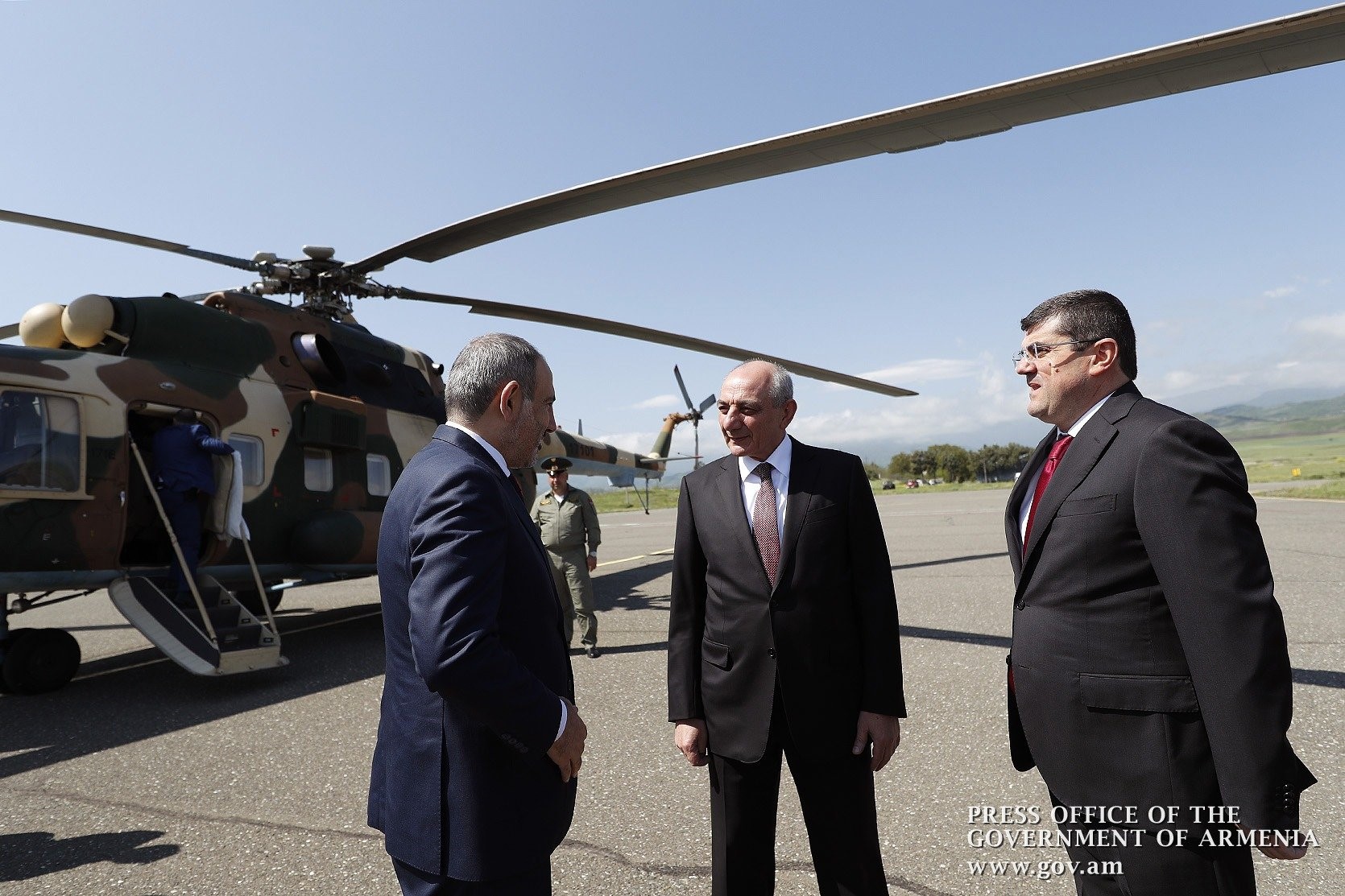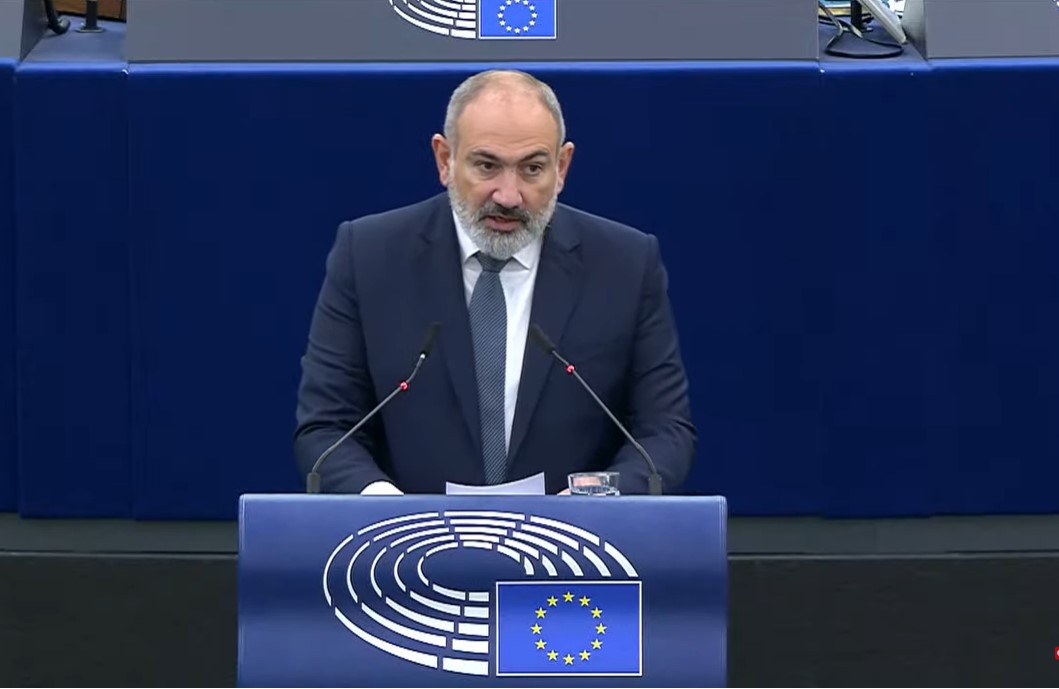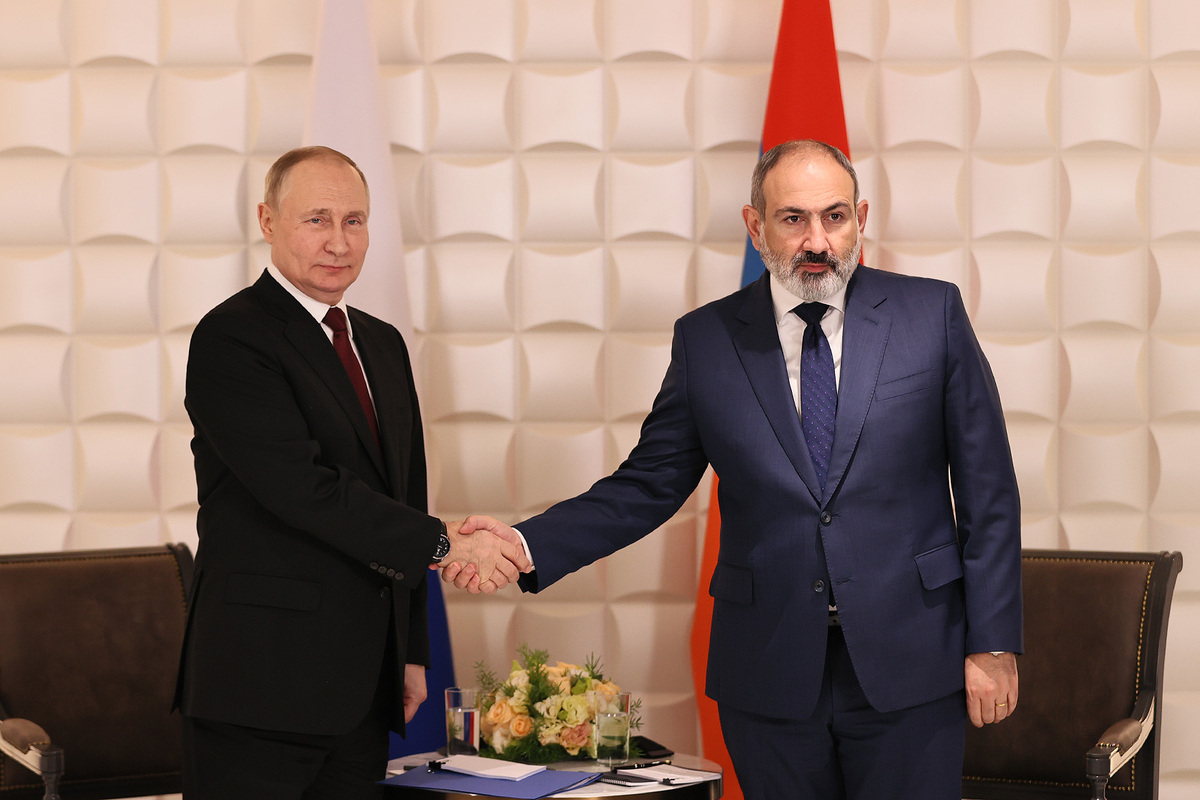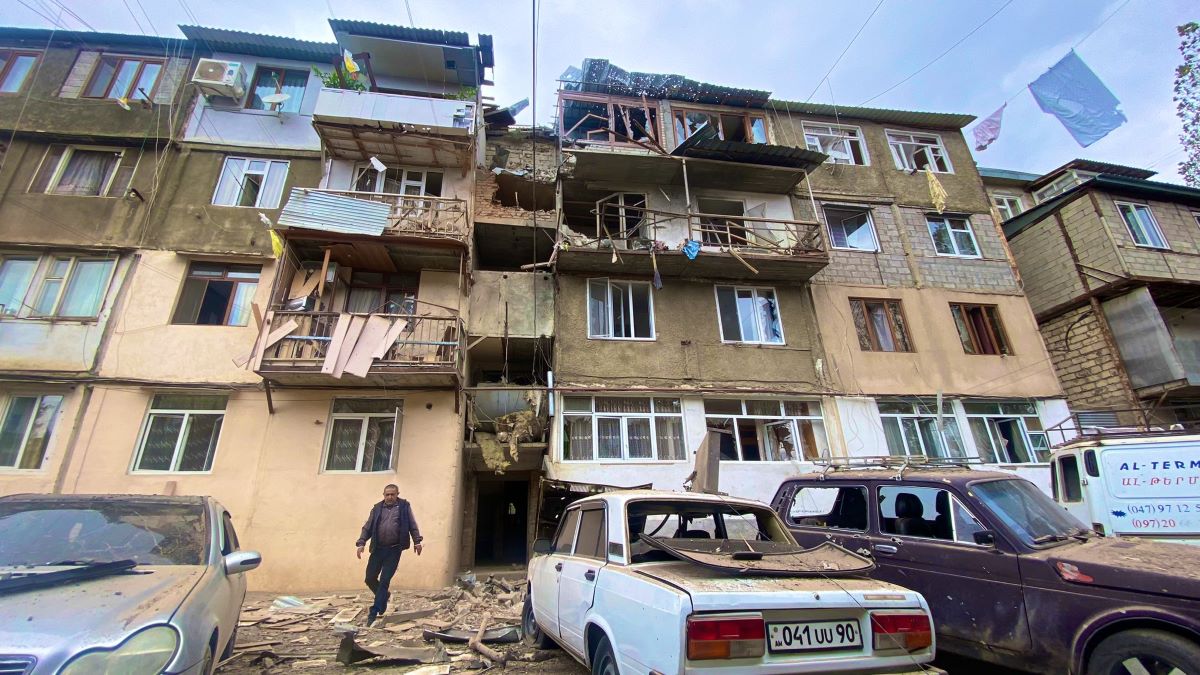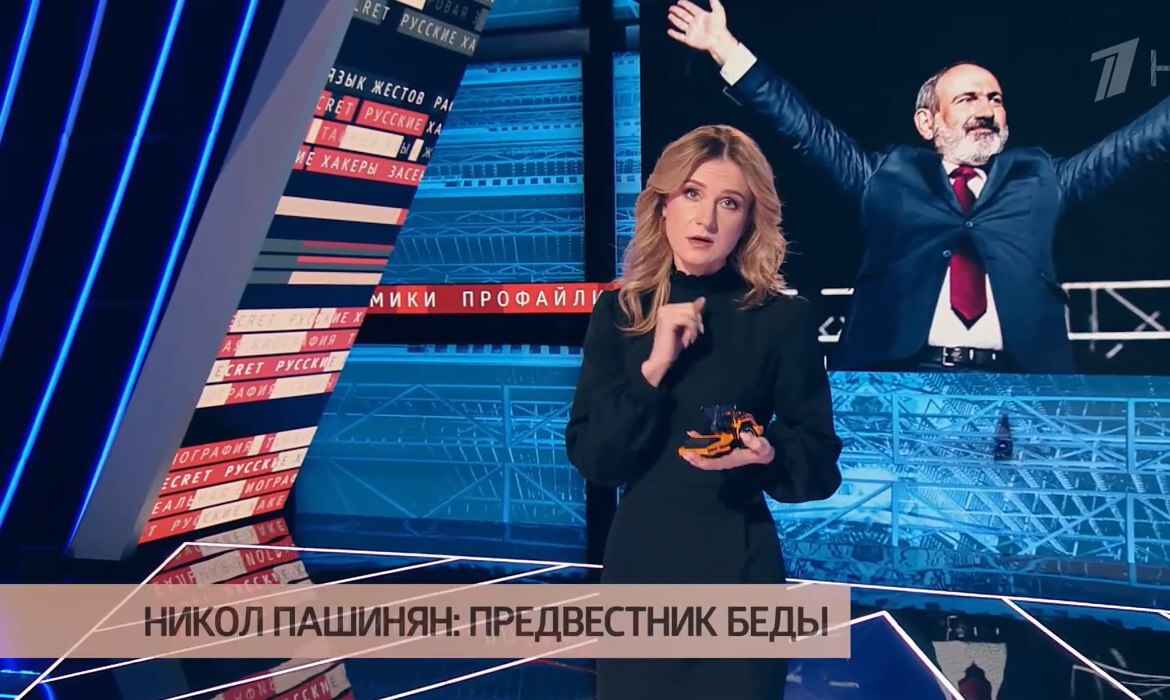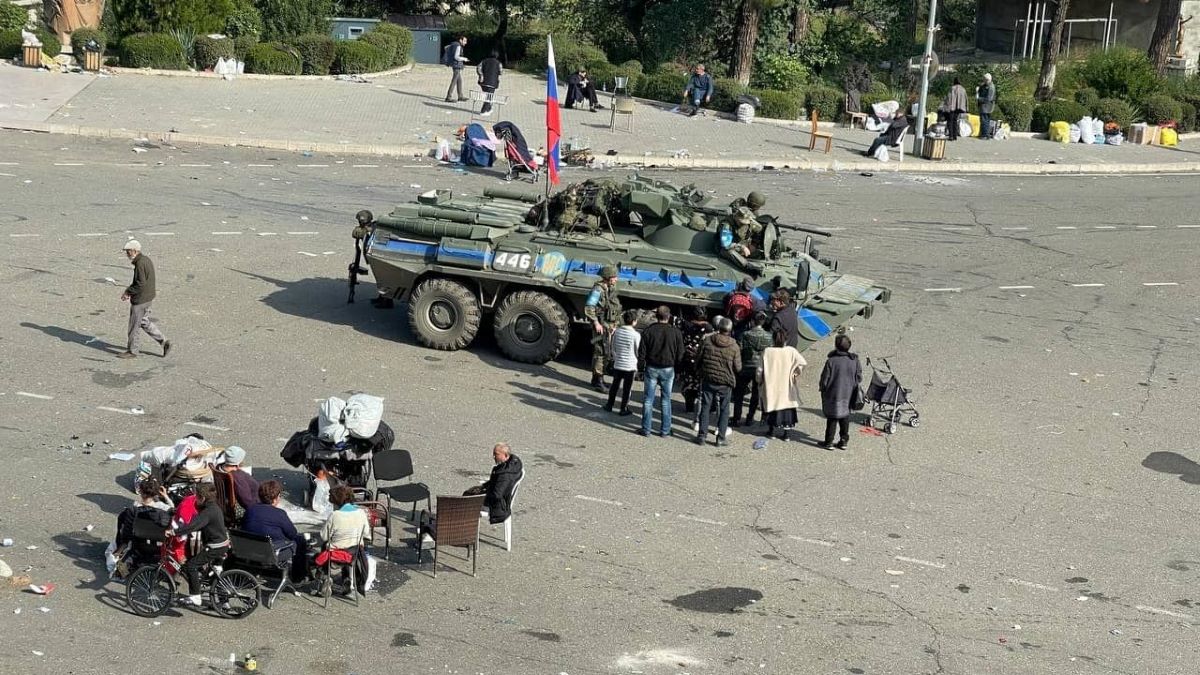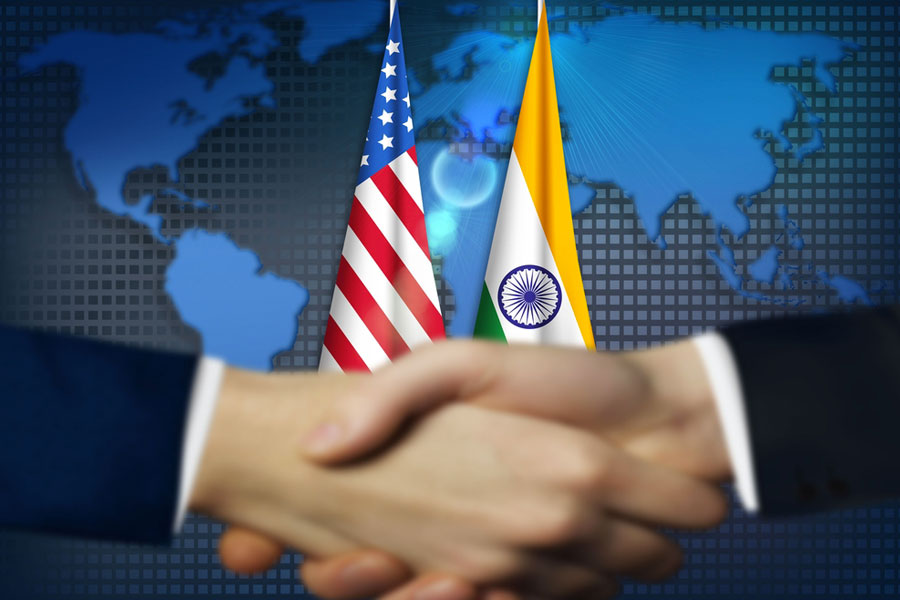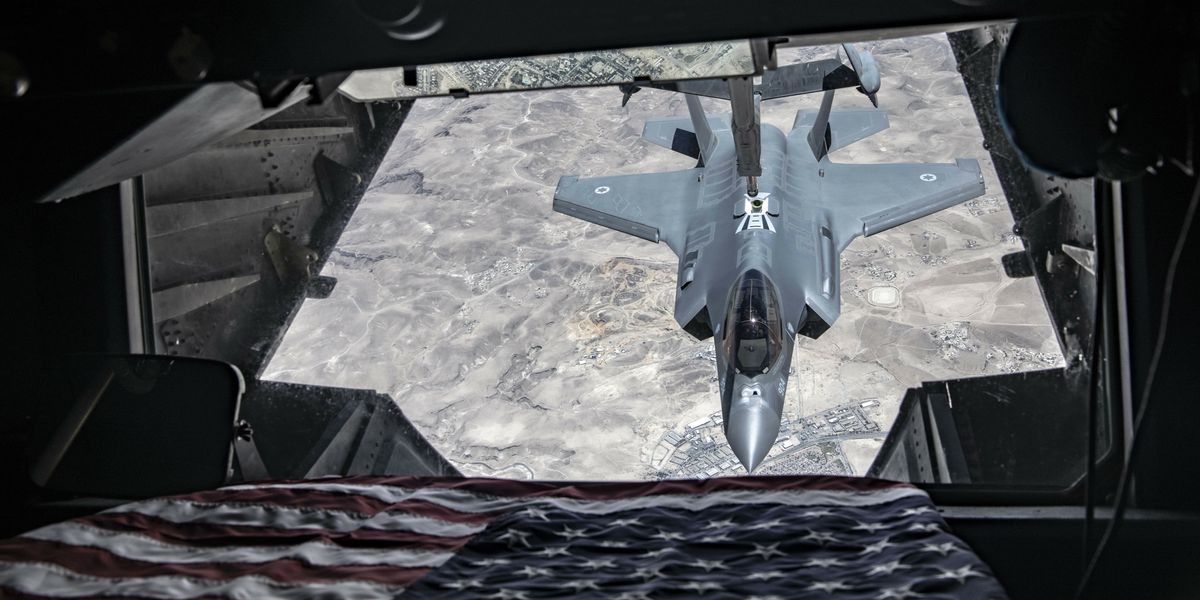"There are no Armenians left in NK, though Russians have taken to defending them". Opinion about reasons
“Russia’s role in ethnic cleansing in Nagorno-Karabakh indicates a weakening of its influence in the region,” says Rasmus Kanback, a Swedish anthropologist and expert on the Karabakh conflict. His article on Russia’s role in the exodus of almost the entire Armenian population from Nagorno-Karabakh was published by Insider.
We publish the expert’s opinion on Russia’s role, its position in the region in recent years and the resulting situation – with slight cuts.
- Baku has won, Armenians are leaving NK: Opinions of all sides of the conflict
- The unrecognised NKR will cease to exist on 1 January by its own decision
- “Armenia will receive our brothers and sisters leaving NK” – Pashinyan
- Reintegration of Karabakh Armenians. “This is fantastic!”
The story of a betrayal: Why Russia acquiesced in the ethnic cleansing in Nagorno-Karabakh
The images of Russian military vehicles being transported by train from Azerbaijan are circulating on social media. Formally, the Russian military states that the vehicles are to be repaired in Russia. In practice, most observers of the conflict in Nagorno-Karabakh understand that these vehicles are not needed there.
Russia’s presence in Nagorno-Karabakh, or in Azerbaijan for that matter, was shorter-lived than anyone could have anticipated when a trilateral ceasefire agreement was signed between Armenia, Azerbaijan, and Russia three years ago. On paper, Russia was to have a five-year mandate with a clause for extension, deploying 1,960 troops to Nagorno-Karabakh.
The mission was intended to monitor the ceasefire, guarantee the safety of the local population, and ensure passage between the Armenian-populated Nagorno-Karabakh and Armenia.
Three years later, none of the hundreds of thousands of Armenians that the Russians were supposed to protect remain in Nagorno-Karabakh. It took less than a week for the entire population to flee in horror of Azerbaijani oppression while Russian troops stood quietly on the sidelines.
Azerbaijani authorities say that Armenians voluntarily left their homes in NK. The Armenian government calls the exodus of compatriots “forced resettlement” and believes that Baku has brought its policy of ethnic cleansing to its conclusion. Yerevan says that the safety of Karabakh Armenians’ residence in their homeland could not be guaranteed.
Assessment of the situation by Armenian experts
A recurring theory in Armenian discourse is that the war between Armenia and Azerbaijan over Nagorno-Karabakh in 2020 was allowed by Russia. One argument maintains that Armenia, being in several formal alliances with Russia, approached the West, and Russia directly or indirectly lost interest in maintaining the prevailing security balance in the Southern Caucasus.
Another argument holds that Russia, through military presence in Nagorno-Karabakh, advanced its geopolitical ambitions, also against Azerbaijan. As much as the peacekeeping forces were seen as a security function for the Armenians in Nagorno-Karabakh, they also served as a tool of power against both Baku and Yerevan.
With the ethnic cleansing of Nagorno-Karabakh and the withdrawal of the Russian peacekeeping force, a vital part of Moscow’s leverage has disappeared. Russia’s position as a geopolitical actor in the region is weaker today than it was before the 2020 war.
Azerbaijan fills the vacuum after Armenia
But let’s rewind before the question of Russia’s role in the ethnic cleansing is fully answered. As the Armenian relationship, at least diplomatically, deteriorated with Russia, it steadily improved for Azerbaijan. Likelythe country’s president, Ilham Aliyev, quickly understood that the security vacuum left by Armenia’s Prime Minister Nikol Pashinyan in recent years could be filled by Azerbaijan.
Just prior to Russia’s major invasion of Ukraine, Vladimir Putin and Ilham Aliyev met in Moscow to sign a new alliance agreement consisting of 43 points. Particularly interesting for this article are the points on deepened military cooperation and cooperation in the energy sector.
At a meeting in early summer 2022, the leaders of the countries once again emphasized the validity of the agreement. A year later, in May 2023, Ilham Aliyev strengthened the rhetoric, calling Russia not only an informal ally but also one “de jure” – an ally in a legal sense. Note that this happened just a couple of months before Azerbaijan, on September 19–20, launched the final offensive against Nagorno-Karabakh.
The fact that Vladimir Putin and Ilham Aliyev are authoritarian leaders who, to some extent, understand each other in a way that Nikol Pashinyan does not, adds to the course of events.
The weeks before the offensive
The weeks before the ethnic cleansing happened, the Armenian-Russian relationship deteriorated rapidly. The Russian side likely claims that it is due to Armenia’s actions. There are three significant events.
The first was when Armenia sent humanitarian aid to Ukraine on September 7. It was the first time it happened. Additionally, Russia was further irritated when Nikol Pashinyan’s wife, Anna Hakobyan, made a formal state visit to Kyiv. In Moscow, the Armenian ambassador to the Kremlin was summoned not only to present a protest but a sharp warning.
The second event is when Armenia held a ten-day joint military exercise with the United States on September 11. While it wasn’t the first military exercise Armenia conducted with the U.S. or NATO, the Armenian government made a big deal of conveying the exercise to the world. Once again, the Armenian ambassador was called for talks in Moscow, and this time the rhetoric escalated further.
The third event took place on September 13 when Nikol Pashinyan, in a lengthy address to the nation, declared that Armenia can no longer rely on Russia as a security guarantor. He referred to Russia’s war in Ukraine, stating that its presence in the Caucasus has proven unreliable.
As this happened, images and videos of Azerbaijani troop movements were published on pro-Azerbaijani social media channels.
“It’s all Armenia’s fault”
The air raid sirens in the capital of Nagorno-Karabakh, Stepanakert, began sounding around 1:00 PM local time on September 19.
While EU representatives, lacking physical presence in Nagorno-Karabakh, took a critical stance on what was happening, Russia assumed a considerably more passive position.
In the days before the offensive, Vladimir Putin stated that Armenia had itself to blame for “recognizing” Azerbaijan’s territorial integrity. “If Armenia itself recognized Karabakh as part of Azerbaijan, what do we have to do with it?”
When the offensive began, the Russian Ministry of Foreign Affairs released a statement in a similar vein. Armenia was accused of not only recognizing Azerbaijan’s territory but also of moving closer to Europe rather than maintaining loyalty to Moscow.
According to leaked documents to the Russian news outlet Meduza, the message in Kremlin’s instructions to Russian media is reflected. Russian regime-friendly media were instructed by the Russian leadership to emphasize that it is Armenia’s fault that Azerbaijan has been given the opportunity to attack Nagorno-Karabakh.
This narrative should be seen as an attempt by Vladimir Putin to legitimize an upcoming change in course rather than a truth.
Civil population without Russian protection
Now we’ve come to Russia’s practical part of the ethnic cleansing. On the ground in Nagorno-Karabakh, events unfolded rapidly. After almost ten months of blockade, the Armenian population had run out of almost all necessities. In the weeks before the offensive, there were talks that if nothing changed, the population was heading towards a famine.
Multiple independent testimonies from border villages suggest that the Russian troops, in connection with the Azerbaijani attacks, began to withdraw or stayed quietly on the sidelines.
One of them, a Karabakh-Armenian soldier who fought in the city of Martuni, claimed that the Russian troops had already withdrawn from the frontlines in the morning. If true, this adds to the evidence that the Russian peacekeeping forces were aware of what was about to happen.
In cities and villages at the front, the civilian population tried to seek safety, mostly on foot or with animal transports as fuel had run out during the blockade. Thousands of people flocked to the airport outside Stepanakert, controlled by Russia since November 2020. The Russian troops are said to have urged the fleeing population to leave, causing them to gather in terrible conditions in Stepanakert.
During the critical days before the escape began, the blockade to the west towards Armenia was still active, and Azerbaijani armed forces were approaching from the east.
It was not until Nagorno-Karabakh’s leadership, under Russian surveillance, signed an agreement to dissolve the army two days later, on September 23, that the blockade was lifted.
More than 100,000 Armenians fled the region within a week. Not to forget, already as many as 50,000 Armenians had already been displaced from the war in 2020.
Armenia’s relations with Russia expand in trade sphere
Russia’s role in the South Caucasus is undergoing a shift after the ethnic cleansing. The Russian relevance for the region can be seen through two different filters: one from a military perspective and the other from trade in the region.
The hasty withdrawal of most Russian troops from Nagorno-Karabakh, announced just weeks after the ethnic cleansing, shows how Russia is reducing its physical presence. In contrast to the diplomatic disputes between Armenia and Russia, trade continues to increase between the two countries.
Due to sanctions against Russia, Armenia has become an intermediary for high-tech equipment that Russia lacks. In 2022, Armenia imported 515 percent more circuit chips from the US and the EU than the previous year. Most of these were later exported to Russia. Additionally, trade from Armenia to Russia continues to increase rapidly, despite the political rhetoric.
Azerbaijan’s gas cooperation with Russia grows stronger
A similar trend has been noted from Azerbaijan to Russia, where trade, according to dubious Russian and Azerbaijani sources, is increasing more than in many years, although not as dramatically as in the Armenian case.
What is more interesting is trade from Russia to Europe. Just as the Caucasian states are used to circumvent sanctions against Russia, the detour is also allowed by Europe to circumvent its own sanctions.
The need for gas is so great that the EU overlooks Azerbaijan’s diluting its gas exports with shares of Russian gas and that Russia benefits from the gas trade with Azerbaijan.
In 2015, the same year the European Commission made the final decision to fund a new gas pipeline from Azerbaijan to Europe, Russian Lukoil invested in long-term contracts in Azerbaijan’s gas fields. Today, Lukoil owns 20 percent of Shah Deniz, the largest gas field.
Furthermore, Russia and Azerbaijan signed new short-term gas agreements in the fall of 2022. Formally, they were supposed to expire in the spring, but EU diplomats lack transparent answers about how much of the Azerbaijani gas is actually Russian, which the European Parliament has reacted to.
Russia’s role in the ethnic cleansing
In the end, it is difficult to see what Russia has gained geopolitically from the ethnic cleansing of Nagorno-Karabakh. What can be observed is that while the diplomatic relationship between Azerbaijan and Russia is in better shape today than two months ago, it is significantly worse between Armenia and Russia. However, Russia’s leverage has decreased with both countries.
Azerbaijan has proven to be a more reliable partner for Russia than Armenia, despite public opinion in Azerbaijan being against Russia. The peacekeeping forces that entered Nagorno-Karabakh from Armenia are now leaving the region through Azerbaijan. Appropriately, it symbolizes the shift in relations that has occurred in the last three years.
In practice, it can be argued that if Russia had fulfilled the ceasefire agreement from November 2020, the ethnic cleansing would not have taken place in September. Even though Vladimir Putin tries to blame the Armenian leadership for the humanitarian catastrophe, it was, in fact, the Russian troops that were both present in Nagorno-Karabakh and responsible for safety — not Armenian.
The decision to let the Russian troops passively watch as Azerbaijan, an authoritarian state, displaced over a hundred thousand people in flight was made by no one else but Moscow.


